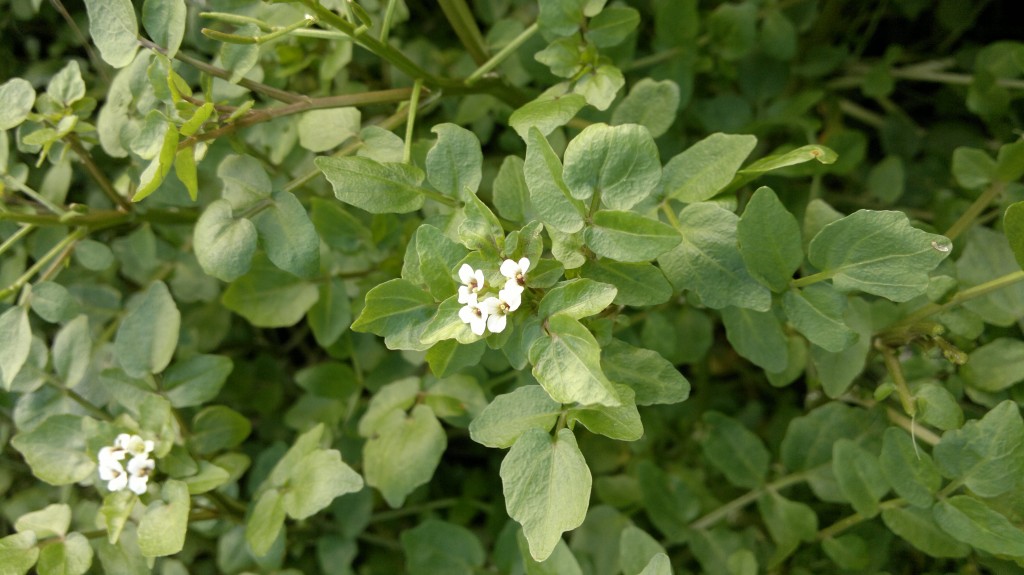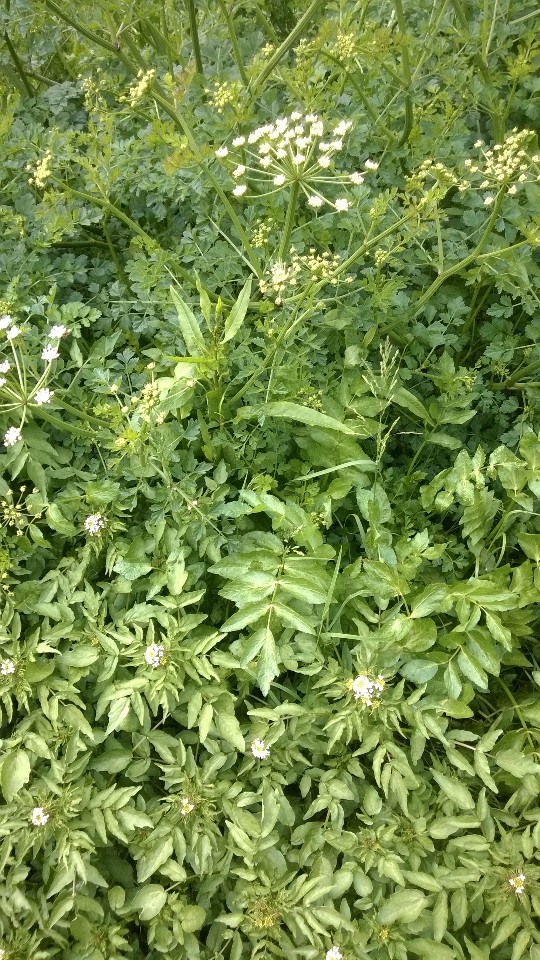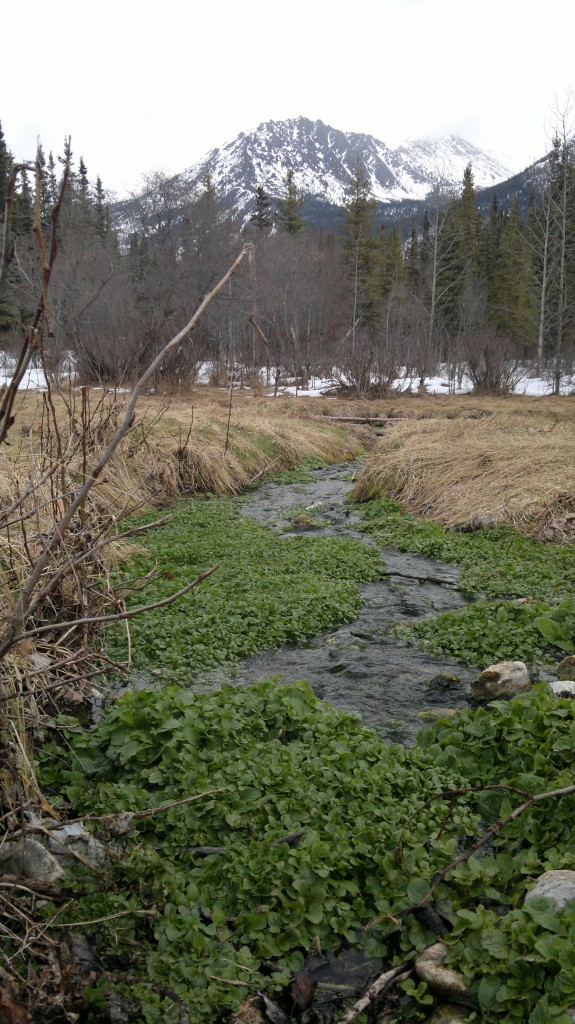Watercress – edibility, distribution and identification
Nasturtium officinale or Rorripa nasturtium-aquaticum
- Edibility – 4/5 – leaves, stems and flowers.
- Identification – 3/5 – distinguished from fools watercress (also edible, tasting very carroty rather than very peppery) by the latter having bluntly serrated leaf edges and tasting of carrots. Do make sure that no lethal hemlock water-dropwort is growing through it.
- Distribution – 3/5 – Fairly common throughout the UK
- Season – March – December – all year in mild coastal areas.
- Habitat – shallow, slow-flowing streams and ditches
Wild watercress is a delicious, super-healthy, peppery salad vegetable, and also cooks down really well, in the manner of very flavoursome spinach.
It is a rich source of vitamins and minerals, containing particularly high levels of bone-building and strengthening vitamin K, and vitamin A, which is important for eye health.
Watercress also contains significant levels of glucosinolate compounds and studies now suggest that these compounds appear to help inhibit breast, lung, colon, and prostate cancers. Antioxidants in watercress also have benefits for the cardiovascular system, and help protect cells. Cooking has been shown to diminish many of these health-giving properties, though cooked wild watercress is still pretty damn good for you!
Nasturtiums v Watercress
There seems to be confusion in some foraging literature over what constitutes a nasturtium. The family of watercresses are the true nasturtiums (only 7 varieties worldwide). The common garden plant with bright orange/red edible 5-petalled flowers and trailing stems of round leaves that are commonly referred to as nasturtiums, are in fact, not brassicas at all, and get their common name because they share the same peppery, nose-scrunching flavour profile of watercress. (Nasturtium comes from the Latin nasus tortus, meaning “twisted nose”). They are in fact in the family tropaeolaceae – edible and good, but not our subject here.

Tropaeolum majus (Garden nasturtium) – Source WIki Commons
Wild Watercress and Liver Fluke
If this sounds too good to be true, it might be… wild watercress can carry the cyst stage of a parasite (fasciola hepatica) when growing in land containing livestock. This means if you eat it uncooked, there is a small risk of them hatching into liver flukes inside you – which obviously isn’t pleasant! Fortunately, it also makes fantastic soup or flan filling, and cooking destroys the parasite.
Like any health warnings around wild foods (as opposed to cultivated foods, which have whole PR departments working to promote their benefits and minimise their negatives), the actual risk from liver fluke affecting humans as a result of eating wild watercress is prone to over-emphasis, if not full-blown exaggeration. If you wish to eat it raw its not hard to minimise or completely negate the risk from liver fluke: simply pick it well away from livestock (the snails that transmit liver fluke are tiny – a few hundred metres is like many, many miles to them. If you can’t find such a spot, but still want to try it raw, harvest it from well above the water line and away from the bank, where the snails can’t get. I happily graze on it and add it to salads throughout the year, and while my liver may not be in great condition, that’s to do with my other indulgences, not this wonderfully healthy plant!
It is interesting that every single listing of wild watercress contains warnings about liver fluke, yet dozens of other tasty aquatic and semi-aquatic species that can also host liver fluke cysts get ignored. Brooklime, fool’s watercress, mints, and cardamine species cresses, to name but a few, could also potentially host liver fluke cysts, but you seldom see a warning next to them.




7 Comments
Yes, that would be about right.. Wild watercress growing from freshwater sources away from agriculture is a delicious salad/ sandwitch addition. As far as I am concerned ,the peppery the better..
Are there any dangerous look-a-like plants?
You should certainly be able to ID hemlock water-dropwort if you are harvesting wild watercress, as they often share habitat.
What about where watercress growing in anarea where parkland deer roam? No sheep.
Deer can also be a vector for liver fluke, though as densities tend to be lower than stock farming, I suspect the risk is lower. Mark
This is the most helpful information about water cress and liver fluke that I have found! I moved to Ireland a few months ago and here it is practically impossible to find a spot where there is no lifestock around. To get it perfectly clear, what do you mean by saying „harvest it from well above the water line and away from the bank, where the snails can‘t get“? Are the snails on the ground or in the water? Should I only pick the plants that are growing in the water and from these only the parts that are well above the water line? Or should I pick the plants that are NOT growing in the water? Thanks so much for your helpful information!
Hi Christine, Thanks – i’m glad you find my website useful. I mean pick from as close to the middle of the watercress as possible – ie. outer leaves in the middle, furthest from both banks and water. It isn’t a safety guarantee, but the further from the edge you get the less likely the snails will have got to those flimsy tips.
Mark